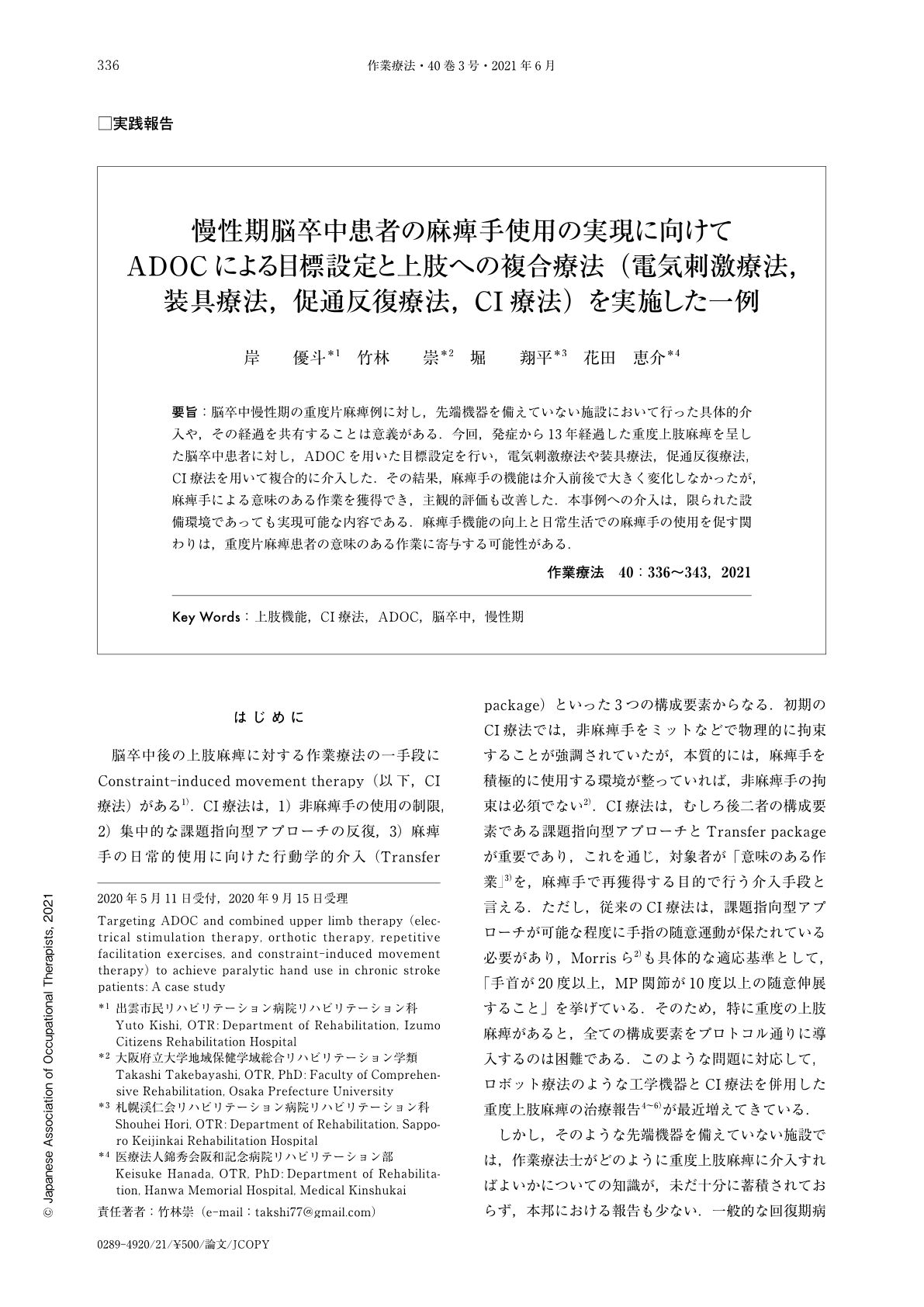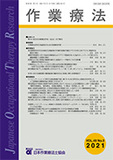Japanese
English
- 販売していません
- Abstract 文献概要
- 1ページ目 Look Inside
- 参考文献 Reference
- サイト内被引用 Cited by
要旨:脳卒中慢性期の重度片麻痺例に対し,先端機器を備えていない施設において行った具体的介入や,その経過を共有することは意義がある.今回,発症から13年経過した重度上肢麻痺を呈した脳卒中患者に対し,ADOCを用いた目標設定を行い,電気刺激療法や装具療法,促通反復療法,CI療法を用いて複合的に介入した.その結果,麻痺手の機能は介入前後で大きく変化しなかったが,麻痺手による意味のある作業を獲得でき,主観的評価も改善した.本事例への介入は,限られた設備環境であっても実現可能な内容である.麻痺手機能の向上と日常生活での麻痺手の使用を促す関わりは,重度片麻痺患者の意味のある作業に寄与する可能性がある.
It is important to share the details and progress of specific interventions performed on severe hemiplegic patients in the chronic phase of stroke in facilities ill-equipped with advanced equipment. The case involved a stroke patient with severe upper extremity paralysis 13 years after the onset of stroke. This study utilized a combination of target setting using ADOC and interventions using electrical stimulation therapy, orthotic therapy, repetitive facilitation exercises, and constraint-induced movement therapy. The functioning of the paralyzed hand did not change significantly after the intervention, but meaningful tasks were acquired, and subjective evaluations were improved. Such interventions are feasible even in a limited facility environment. Improving paralytic hand function and encouraging the use of the paralytic hand in daily life may contribute to meaningful work among patients with severe hemiplegia.

Copyright © 2021, Japanese Association of Occupational Therapists. All rights reserved.


